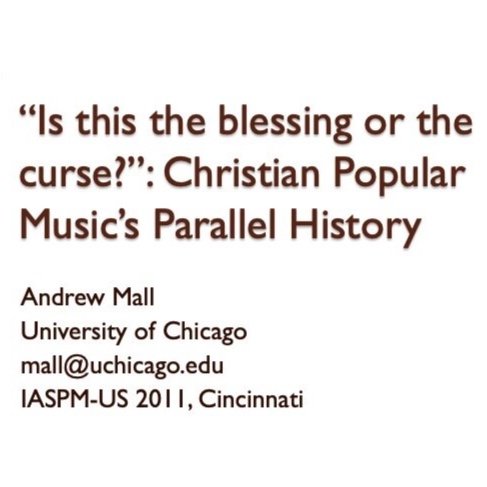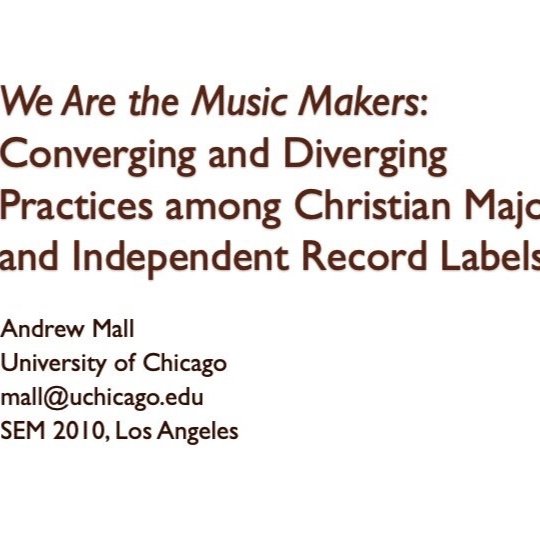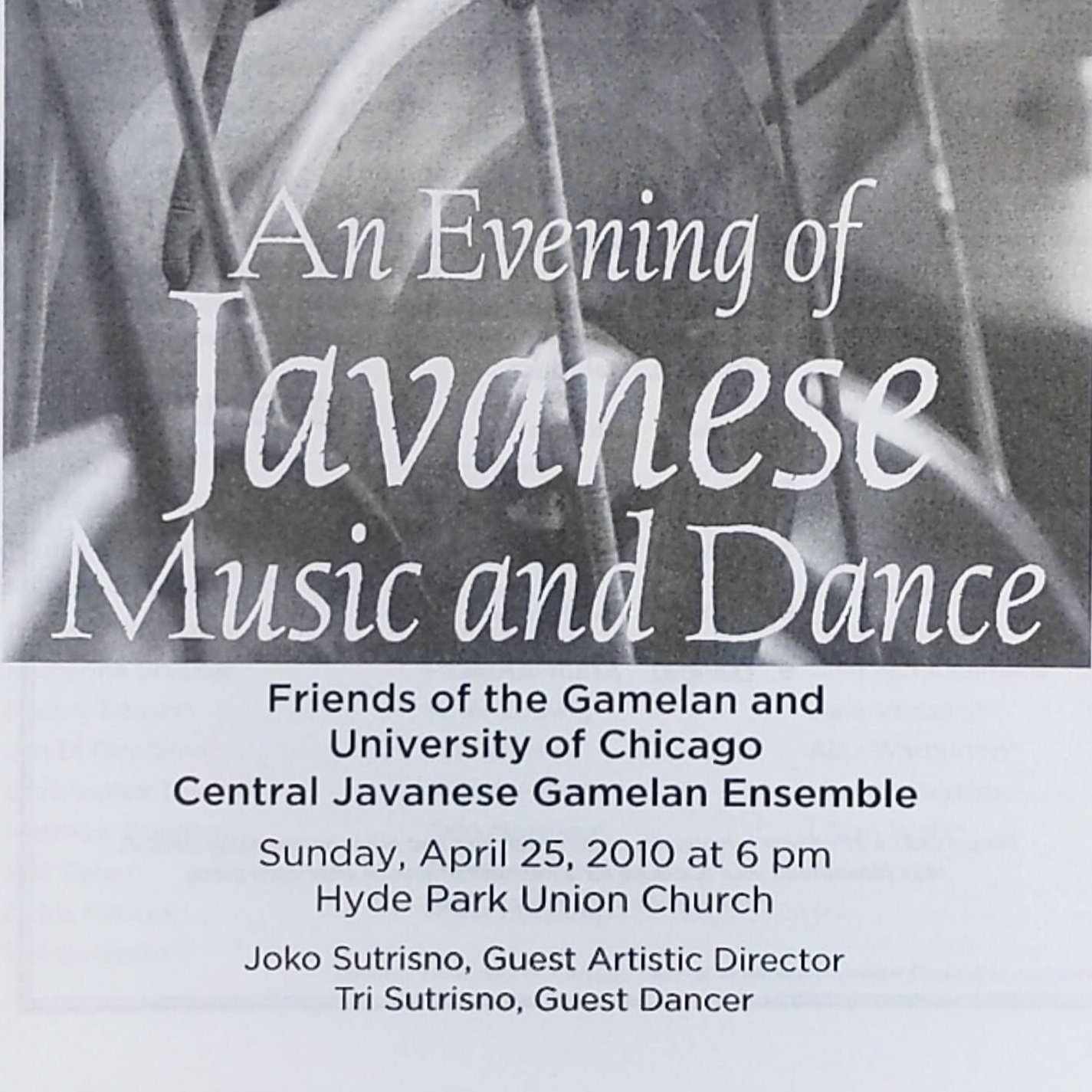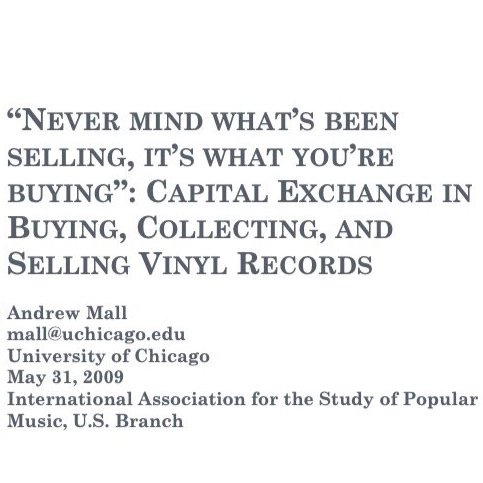

“Is This the Blessing or the Curse?” Christian Popular Music’s Parallel History
IASPM-US conference presentation (2011). In this paper, I examine the historical forces that shaped the CCM industry as separate and distinct from the mainstream industry, and consider how these forces have also contributed to the relative absence of scholarship on Christian popular music within popular music studies’ canons. I rely primarily on historical and ethnographic research on the Christian popular music recording industry undertaken for my dissertation in 2009–2010.
Intermediate Central Javanese Gamelan
Our intermedia central Javanese gamelan ensembles course is available to current members of Friends of the Gamelan who have completed the beginning course. Students gain more experience on the the colotomic (structural) and balungan (melodic skeleton) instruments, and are exposed to some of the elaborating instruments used in a typical ensemble. We primarily focus on pieces in the ladrang forms (Yogya and Jakarta traditional repertoire), which are more complicated than the lancarans and buburans taught in the beginning course but not as lengthy as gendhings.

We Are the Music Makers: Converging and Diverging Practices among Christian Major and Independent Record Labels
SEM conference presentation (2010). Based on ethnographic fieldwork and interviews with Christian music recording industry “cultural intermediaries” in 2009–2010, this paper’s nuanced study of Christian record labels contributes to a broader center-periphery perspective on the mediation of popular music in the United States.


Lost in the Sound of Separation: Mainstreams and Alternatives at a Christian Rock Festival
SEM conference presentation (2009). How do the performers, mediators, and listeners of alternative Christian rock negotiate these multiple tensions? How can their negotiations contribute to existing conceptions of mainstreams and alternatives? Describing the lived experiences of Cornerstone participants requires a perspective more subjectively nuanced than the strict dichotomies of previous models. In working through these ideas, this ethnography studies the ways in which Cornerstone contributes to participants’ self-conception of their Christian lifestyle: mainstream, alternative, and in-between.

“Never Mind What’s Been Selling, It’s What You’re Buying”: Capital Exchange in Buying, Collecting, and Selling Vinyl Records
IASPM-US conference presentation (2009). Who holds the upper hand at record fairs? The dealers sell the commodities, yes, but the collectors decide what to buy, from whom, and (often, via bargaining) for what price. While dealers frequently self-identify as collectors, interactions between dealers and collectors necessarily rely upon the commodity status of music recordings and their role in the exchange of economic, cultural, and social capital. Through ethnographic research at Chicago-area record fairs, I explore the tensions between record dealers and record collectors, and investigate the ways in which capital and exchange contribute to musical meaning.

“I Heard You Have a Compilation of Every Good Song Ever Done by Anybody”: Subjectivity, Exchange, and Interaction at Record Fairs
MIDSEM conference presentation (2009). Record fairs are regular events where dealers rent tables from the organizers to sell vinyl records, CDs, and music memorabilia to the general public. Through ethnographic research at Chicago-area record fairs and interview data, I examine the different expectations—both of record dealers and collectors—that can help us examine the subjective, one-to-one economic interactions that make up the lived experiences of the record fair event.




Steady Diet of Nothing: Affinities, Sacrifices, and Change at Record Fairs
SEM conference presentation (2006). Building on Will Straw’s confluence of cosmopolitanism (“attentiveness to change occurring elsewhere”) and connoisseurship in his study of communities within popular music, this paper explores issues of everyday practice and changing identity through an ethnography of record dealers—individuals who act both as mediators and audience members within popular music exchange—using record fair events as the primary public cultural space.
What Would the Community Think: Communal Values in Independent Music
voiceXchange (2006). An enthusiastic post on a website, a supportive audience in a smoky club, an animated conversation at a local music store—every interaction between fans of independent music binds them in a community. This paper presents my initial research into the ways in which the independent music community’s boundaries and values are expressed and shared in evolving social networks by means of interactions that authenticate participants into this community.
“Tell Everyone We’re Dead”: Underground Rock and Its Canon
MIDSEM conference presentation (2006). The rock canon, comprised of music that is surrounded by extensive critical discourse, transcends the temporal specificities inherent in popular music. What do critics find transcendent about canonical rock music? How does the emergence of a canon function for underground rock (music distributed primarily through non-commercial radio stations and independent record stores)? This paper approaches these questions through the context of ethnographic work at a non-commercial radio station in Chicago.
Search and navigate extras
- music industries
- festivals
- gamelan
- Boston
- God Rock Inc
- CCM
- Northeastern University
- Christian rock
- panels
- Tufts University
- worship
- congregational music
- Northeastern Global News
- SCM
- record labels
- Nashville
- methods
- ethics
- Chicago
- University of Chicago
- punk
- SEM
- radio
- Taylor Swift
- subculture
- capital
- Furnace Fest
- AMS
- TikTok
- IASPM-US
- hardcore
- sing-alongs
- Amy Grant
- crossover
- introductions
- emo
- vinyl
- TIME
- scene
- AAR
- Beer & Hymns
- MEIEA
- Christianity Today
- DePaul University
- Universal Music Group
- awards
- Future of Pop
- community
- Keith Green
- Ticketmaster